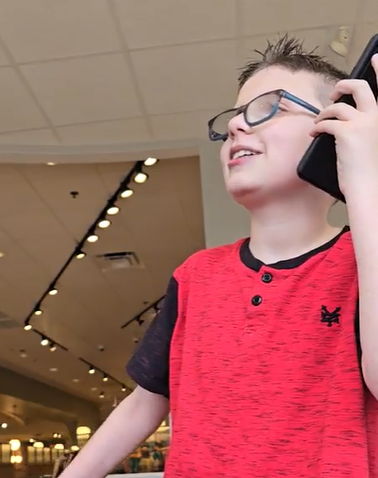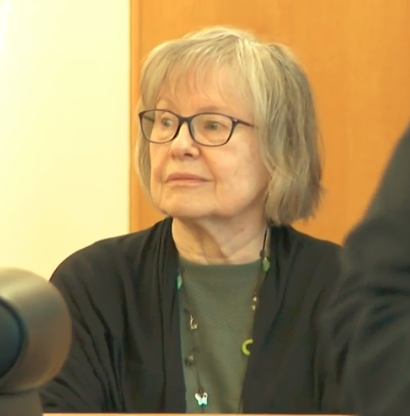Manchester Ink Link and InDepthNH.org co-publish Garry Rayno’s Distant Dome
By GARRY RAYNO, Distant Dome

Garry Rayno
New Hampshire has an inelastic revenue system which means when times are good there is more money than state government needs to function.
That is one reason Gov. Chris Sununu wanted to create a special fund for state and local highway rehabilitation and school building needs rather than use the money to expand, or some would say, properly fund human service programs and higher education.

Former Gov. John Sununu
His father, former Gov. John H. Sununu, created a similar fund 30 years ago to conserve land and historic properties when he was governor and the revenues were flowing into the state’s coffers.
But conversely when times are tough, there is little to cushion state government from major shortfalls in cash and when that happens, programs are slashed as in 2011 when state aid to the university and community colleges systems was cut in half.
People used to say the New Hampshire revenue system relied on “sin taxes” such as tobacco, liquor and gambling to fund government. Although that was about half the picture, the state has always relied on businesses and tourism to pay a large share of its tax burden.
What results is a hodgepodge of taxes and fees that go up and down with great regularity to fund services whose needs grow in tough times and diminish in the good.
The trend continues today.
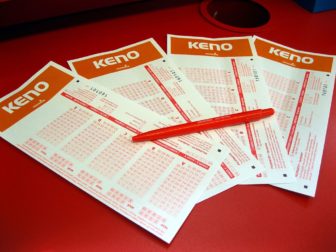 Rather than fund full-day kindergarten, a priority of the current governor, with state general funds, lawmakers decided to pay for the expansion with the on-line lottery game Keno which is very popular in Massachusetts and other locations. Communities have to vote to allow Keno.
Rather than fund full-day kindergarten, a priority of the current governor, with state general funds, lawmakers decided to pay for the expansion with the on-line lottery game Keno which is very popular in Massachusetts and other locations. Communities have to vote to allow Keno.
Sununu wanted $18 million to help poorer districts expand kindergarten while the total costs would have been about $6 million to $8 million more for all school districts.
Instead, lawmakers passed a plan that will provide about $14 million in state aid although Keno revenues are not expected to generate that kind of money for several years.
How this will work remains to be seen, but it is not going to happen instantly.
New Hampshire has historically supported public education with gambling proceeds. The first state to have its own sweepstakes, the money was earmarked for education aid to school districts and still is thanks to a constitutional amendment approved many years ago.
Today, lottery revenue depends on big payouts in Mega Millions or Power Ball to produce the kind of revenue budget writers expect from the Lottery Commission.
When jackpots total hundreds of millions spurring mass ticket sales, the revenue is fine. When the jackpots are small, revenues are short.
The state Supreme Court’s Claremont II decision telling lawmakers they had to find another method to pay for public education is also telling.
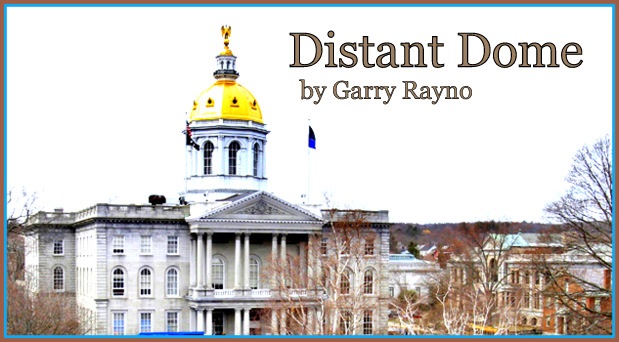 Lawmakers increased the rates on many existing taxes such as tobacco, real estate transfer and business taxes, added rental cars to the rooms and meals tax, and created a statewide property tax and utility tax to cover increased state aid to schools.
Lawmakers increased the rates on many existing taxes such as tobacco, real estate transfer and business taxes, added rental cars to the rooms and meals tax, and created a statewide property tax and utility tax to cover increased state aid to schools.
A state property tax does little to change the tax structure, but instead claims revenue cities and towns were collecting for education as state revenue.
This does little to lower the tax burden in most communities but does require cities and towns to be much more current on their property value assessments.
A recent New Hampshire Center for Public Policy Studies report found two decades later that the poor school districts still have a much more difficult time raising money and providing educational opportunities for their children than do the property wealthy communities.
Education is not the only program caught up in the state’s unique revenue system.
The federal government recently told the state to change how it pays its share of Medicaid expansion costs.
For the first three years of Medicaid expansion, the federal government paid 100 percent of the costs. But beginning with the 2017 fiscal year, states began paying some of the costs, stepping up gradually to 10 percent in 2020.
In New Hampshire, the cost for the 2018 fiscal year is estimated to be about $40 million, but the money does not come from state revenues it comes from insurance companies and health care providers, mostly hospitals.
The state recently announced the Center for Medicaid and Medicare Services has given New Hampshire until the end of fiscal year 2018 to come up with a solution.
Federal regulators opposed the plan for “voluntary donations” from insurers and providers but were convinced to let the state proceed under the Obama administration, but with a new president that is no longer the case.
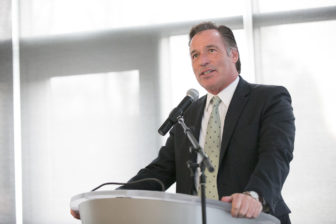
Philadelphia University Blogs
Former Gov. Craig Benson
This brings to mind “Mediscam” when the state drew down hundreds of millions of dollars in federal money through its Medicaid Enhancement Tax until it was given a multimillion dollar bill during the Craig Benson administration that required several budget cycles to pay off under the John Lynch administration.
State Parks have been self-funding since 1988 when then Gov. Judd Gregg and lawmakers decided park revenue would pay for the system’s expenses.
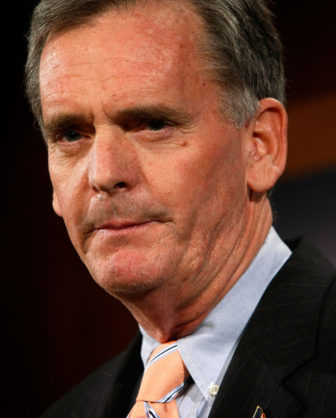
Judd Gregg
Some parks like Hampton Beach and Wallis Sands are more profitable than others and more attractive.
As a result, the costs of parking at Hampton Beach have risen faster than the tide in the Bay of Fundy. And free skiing for seniors and other perks have disappeared over time.
But that has not been enough to keep some park facilities from falling into disrepair.
Several years ago, the capital budget included park items — mostly rehabilitations — paid for with general fund dollars.
These are some examples of how the state’s cobbled-together tax system requires unique ways to pay for what most states fund with general fund money.
But when the mantra is “no broad-based tax,” you have to be creative or you will fall behind other states that have more expansive state parks and full-day kindergarten.
Budget Surplus
Preliminary budget work to properly place revenues and expenses in the proper fiscal years, shows the state had a $89 million revenue surplus, not a budget surplus, for the recently ended 2017 fiscal year.
And when some other adjustments are made for a legal settlement, the figure becomes $93.5 million.
These are unaudited figures and will change when the state’s comprehensive financial report is released around the end of the year.
The figures show business taxes produced $634.3 million for fiscal 2017, $12 million less than the previous year with the loss attributable to rate cuts.
The state’s second biggest revenue generator, the rooms and meals tax, produced $314.7 million, which is $15 million more than the previous year. Other levies producing millions more in revenue than the previous year were the real estate transfer and interest and dividends taxes, while those producing significantly less were the tobacco and communications taxes along with lottery receipts.
For the 2017 fiscal year, state revenues totaled $2.405 billion, which was $15 million less than 2016.
So despite its patched together nature, the state’s tax system can still produce some serious green when times are good.
Garry Rayno can be reached at 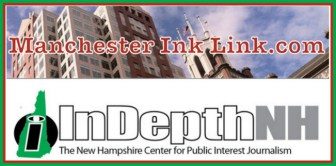 Garry Rayno’s Distant Dome runs exclusively on Manchester Ink Link and InDepthNH.org, where Rayno will explore a broader perspective on State House – and state – happenings. Over his three-decade career Rayno has closely covered the NH State House for the New Hampshire Union Leader and Foster’s Daily Democrat, and his coverage spanned the news spectrum, from local planning, school and select boards, to national issues such as electric industry deregulation and Presidential primaries. He is former editor of The Hillsboro Messenger and Assistant Editor of The Argus-Champion. Rayno graduated from the University of New Hampshire with a BA in English Literature and lives with his wife Carolyn in New London.
Garry Rayno’s Distant Dome runs exclusively on Manchester Ink Link and InDepthNH.org, where Rayno will explore a broader perspective on State House – and state – happenings. Over his three-decade career Rayno has closely covered the NH State House for the New Hampshire Union Leader and Foster’s Daily Democrat, and his coverage spanned the news spectrum, from local planning, school and select boards, to national issues such as electric industry deregulation and Presidential primaries. He is former editor of The Hillsboro Messenger and Assistant Editor of The Argus-Champion. Rayno graduated from the University of New Hampshire with a BA in English Literature and lives with his wife Carolyn in New London.



